Here Are Some Of The Best Cars I Saw In The Petersen Vault
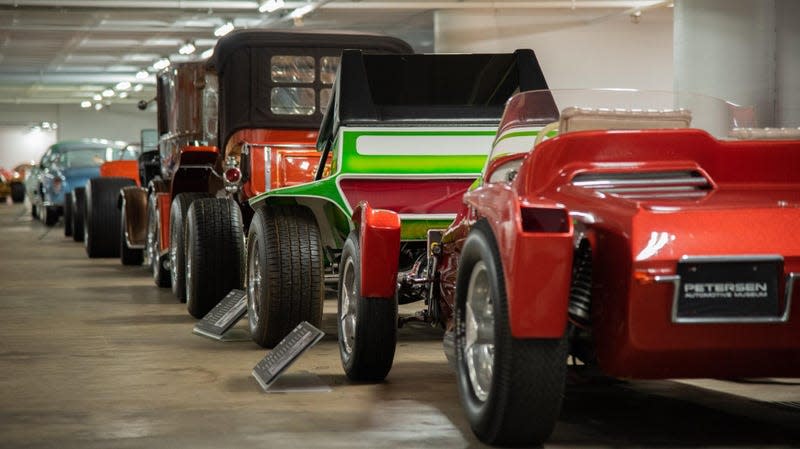
The Petersen Automotive Museum has one of the worlds best collection of cars. It’s a place that any automotive enthusiast should visit at least once in their life. Luckily for me, I live nearby and tend to visit it at least 3 times a year. One of the best spots of the museum is its basement, affectionately referred to as the Vault. It’s its own separate collection that’s full of one offs and stuff you’ve literally only seen on movies or tv.
We’ve touched on the Vault before a decade back when Jason Torchinsky toured it. The collection down there is a bit different now from what he saw back then but just as great. So here’s some of the best cars I saw during my time in Petersen’s Vault.
Read more
10 Years Ago, An Underrated Zelda Game Paved The Way For Tears Of The Kingdom
Julianna Margulies Offers Predictable Apology for Racist Remarks
I honestly had no idea this existed. Originally commissioned by GM for Pope John Paul II’s visit to Mexico, it started life as a seventh generation Cadillac Deville. It’s roof was then lopped off, an elevated platform with a chair added, then wide doors with retractable steps and official Vatican seals.
Ultimately though it was all for nothing. Given the attempt on John Paul II’s life in 1981, he wasn’t permitted to use this popemobile in public; the Vatican didn’t want to take any chances.
Bentley Turbo R
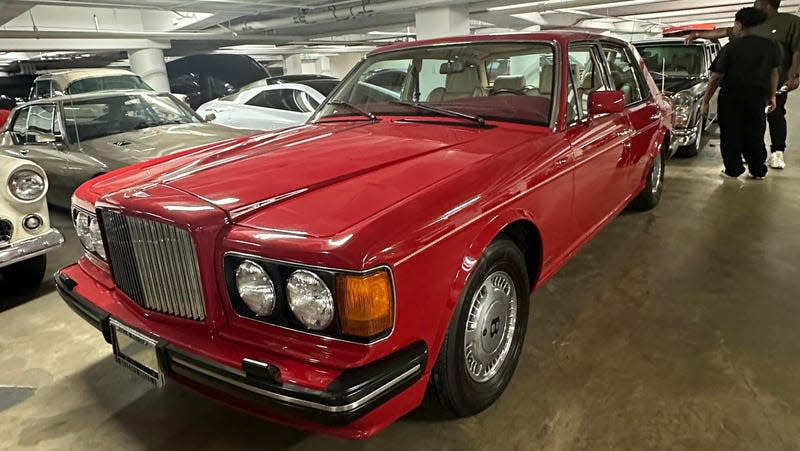
One of only 5,864 ever made, the Turbo R was a performance sedan from the British luxury brand. More than just a letter, “R” in this instance stood for roadholding. The Turbo R didn’t have the cushy, cloud-like ride Bentley was known for. This thing could actually handle: it had stiffer front and rear roll bars and retuned dampers. Power came from Bentley’s legendary 6.75-liter turbocharged V8 that made just under 400 horsepower.
This Turbo R was owned and daily driven by Mr. Petersen himself.
1954 Kaiser-Darrin 161
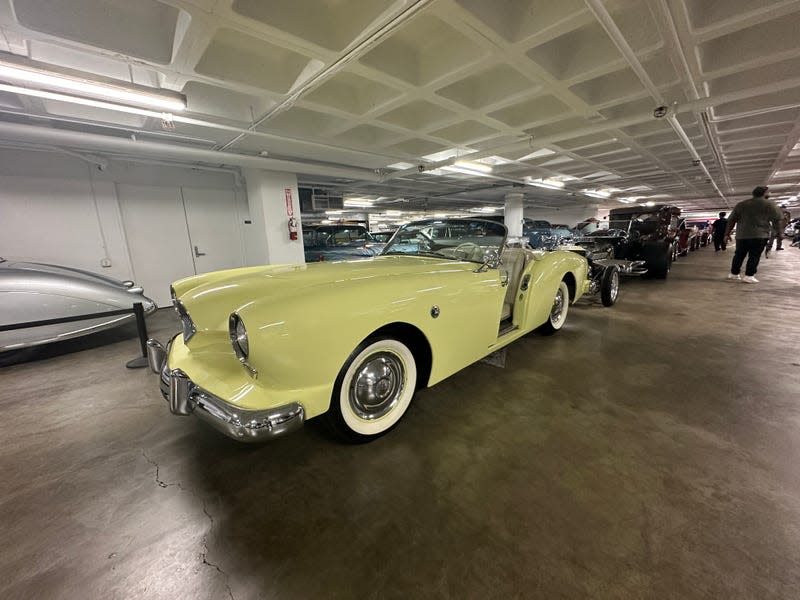
Designed by Howard Darrin and built by Kaiser Motors in 1954, the 161 was essentially a rebodied Kaiser Henry J. It was designed to be an American answer to the European roadster craze of the early 1950's. It’s main American competitor was the C1 Corvette. It’s design was unique in that it was the second American car (after the Corvette) to use an all fiberglass body. It also had a three position convertible top and cool doors that slid into the body rather than opened out. Power came from a 90 hp 2.6-liter six-cylinder engine.
1948 Davis Divan

A failed vision of the future, the Divan was built by Davis Motorcar Company, a Southern California based automaker. Davis had big plans for the Divan. Two prototypes were made in ‘47 and after raising over a $1 million through a nationwide campaign, just 13 were ever built.
Citroen Mehari Transparente
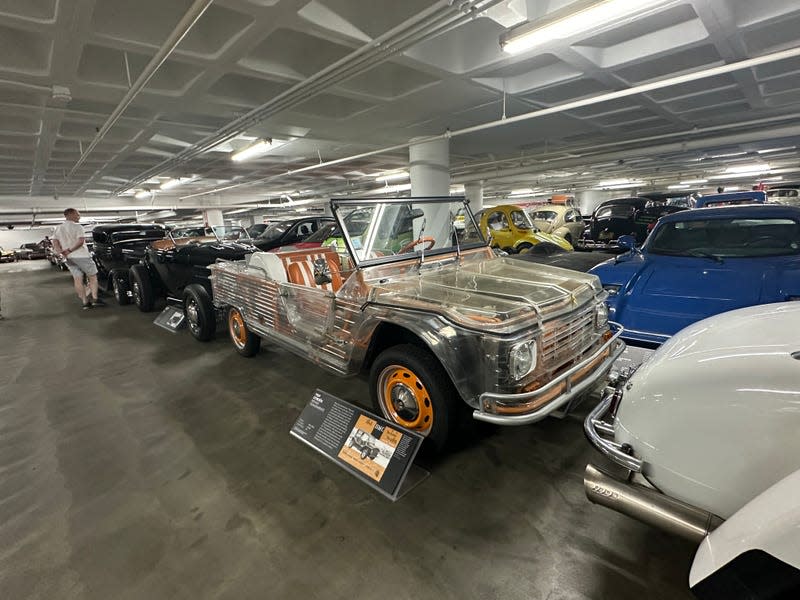
The Citröen Mehari was an open air, early SUV like thing made for over 20 years before it stopped production in 1988. Think of it as sort of a French VW Thing. A number of variants were built over the years, the most unusual of which is this transparent Mehari Transparente. More art piece than car, its transparent body lets you see the orange chassis of the Mehari underneath.
1967 Honda N600

Designed specifically for Americans, the N600 was Honda’s first foray into U.S. car market. The Civic before the Civic, it was damn near a Kei car on American roads. While the N600 sold well — just over 25,000 had been sold when production stopped in 1972 — the sportier Z600 proved to be more popular. This particular N600 is one of 50 test vehicles and was the very first N600 off the production line for the U.S.
1978 Mercedes-Benz 600 Landaulet

The massive Mercedes you see here was owned by none other than Iraq’s Saddam Hussein. Hussein used the Landaulet numerous times when he was President of the country to ferry him and other dignitaries around. Its design was similar to Landaulets from the early 20th century in that it had an enclosed chauffeurs compartment and a top that only opened over the rear seat. Most of Hussein’s vehicle’s were destroyed when the Iraqi government was overthrown in the early 2000's. This Mercedes managed to survive by being driven out of Iraq and away from the fighting. You can see evidence of what the car went through as there are various imperfections all over the body.
Honda FC Sport Concept
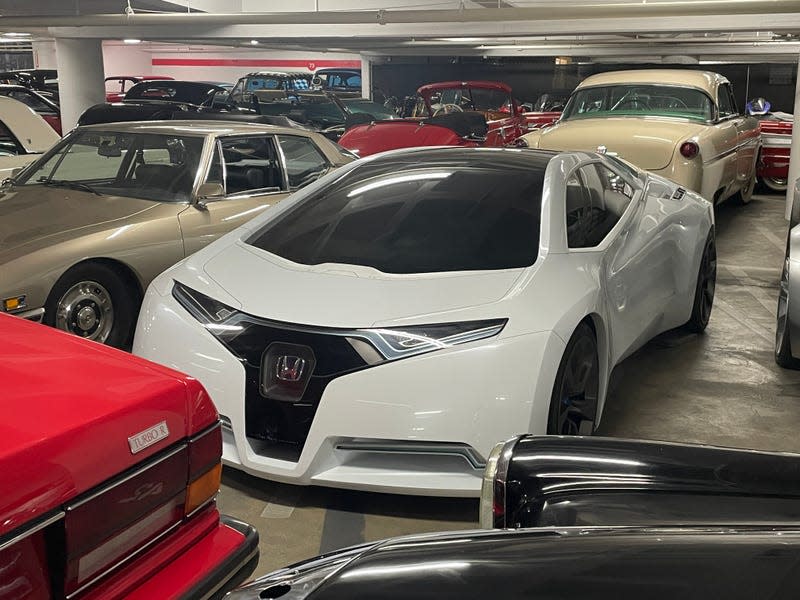
Randomly parked on the other side of the Bentley Turbo R between two other cars was Honda’s FC Sport Concept from 2008. The concept was a design study for a future hydrogen powered sports car. It’s low slung design was due in part to a unique modular setup for it’s fuel cell and EV components. The electric motor was positioned just over the front axle while the hydrogen storage tanks were over the rear axle.
Hansen Cobras

Literally built from scratch by Wally and Harry Hansen, two brothers from nearby Inglewood, the Hansen Cobras were a pair of sports cars made in their garage in the early 1950s. The cars were visually similar but different underneath. Wally used suspension bits from a 1953 Oldsmobile for his while Harry went for a suspension setup pulled from a 1940 Ford. Wally used a 200 hp Olds V8 in his Cobra while Harry went with a Cadillac V8 making 235 hp for his.
The two cars took 17 months to build and when finished, were featured in a 1955 issue of Motor Trend. The two cars were eventually donated to the Petersen in the early 2000's.
Dodge Viper
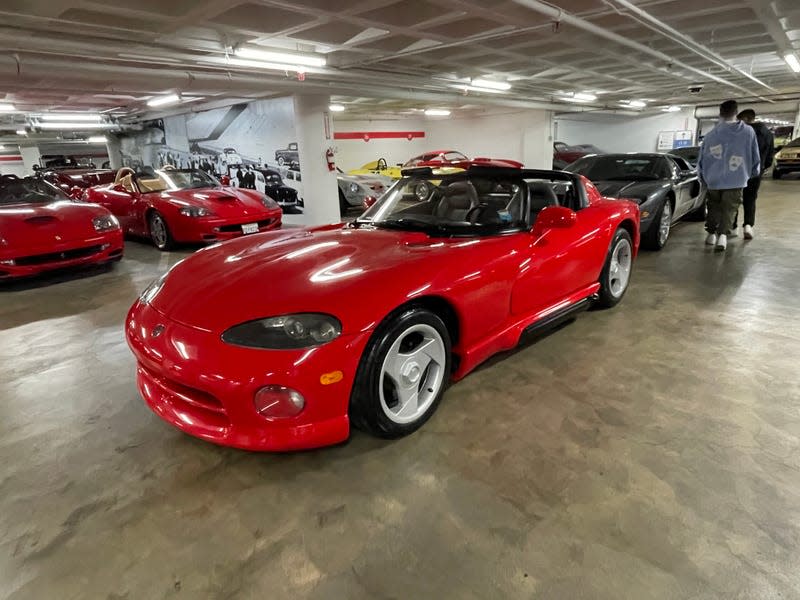
This isn’t just any ole’ Dodge Viper. Not only is it a first generation Viper, this Viper is one of just six pre-production models Chrysler made in 1988-1989.
1956 Ferrari 250 GT Berlinetta Competizione

In honor of the upcoming Ferrari movie starring Adam Driver, the Vault currently has a small Ferrari exhibit. Among the handful of Ferraris there was this beautiful 250 GT Berlinetta Competitizone. Often called TdF or “Tour De France”, it’s described as one of the most successful racing cars in Ferrari’s history. Among its wins are a 1957 win at the Targa Florio, and a 1959 24 Hours of Le Mans class win. Just nine examples were ever made. Each one was designed by Pininfarina and were all powered by 3-liter 260 hp V12s.
Jaguar XJ220

Lastly, one of my absolute all time favorite cars, the Jaguar XJ220. Despite how fantastic it looks, the car was a failure for Jaguar. Initially, it was supposed to have a 6.2-liter V12. Engineering realities caused Jaguar to switch to a twin-turbo V6 instead. Other unexpected changes combined with a worldwide recession and a nearly £200,000 price increase turned many would be buyers off. Jaguar initially planned to make 350, but just 281 XJ220s were ever made.
More from Jalopnik
Deadpool 3 Set Pictures Reveal the Return (and Death?) of Another X-Men Character
Taylor Swift’s association with Jackson Mahomes is disappointing fans
Florence Pugh is the latest celebrity to be hit with a projectile onstage
Sign up for Jalopnik's Newsletter. For the latest news, Facebook, Twitter and Instagram.

 Yahoo Autos
Yahoo Autos 